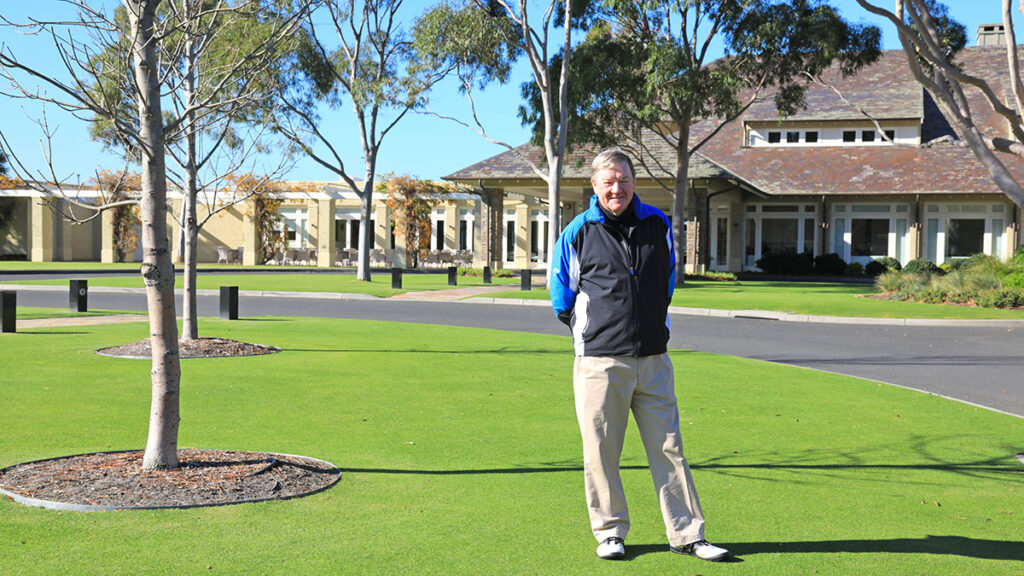Golfers are too often taken hostage by their convictions.
I ran into an acquaintance at the golf club and asked him casually how he was going. “Oh,” he replied in a morose tone of voice, “I’ve suffered another breakthrough.”
“You’ve suffered a breakthrough? How is that?”
“Well, I lengthened my backswing and cured my slice. But then I went out onto the course and overdid the whole thing. Completely out of control. Disaster. Wish I hadn’t thought of it from the start.”
I wondered whether it was worth torturing the fellow with a quote or two from Bobby Jones: “Golf is not taught as it is learned.” Or: “When playing golf, it is almost impossible to think of anything else.” Or even: “When one has good form, he is able to make the maximum employment of his physical resources in producing a powerful, accurate contact between clubhead and ball.”
Alas, I concluded, no mere expression in the English language would do any good. This man, an undiagnosed golf tragic – indeed, some would say, a psychological basket case – represents a common sickness among we golfers.
As amateur toilers on our local links, we golfers are too often taken hostage by our convictions regarding how to hit a golf ball in the direction and to the approximate distance we want the ball to travel. We constantly ask ourselves, Why did that shot go wrong? How do I play better? What changes must I fashion to my stance or to my swing in order to prevail over par, or, for many of us, over double-bogey? For most golfers the answer lies in further instruction.
Beyond doubt, the scrutiny and advice of a skilled third person – meaning that cohort of humans either blessed or cursed with the occupation of a teaching golf professional – are seen as the key to the door leading to paradise. Now, the golfer says to themself, I can really play as I should. Like Lazarus raised from the dead, I’m cured of poor shots. My playing partners need not cringe as I strike the ball. I am no longer the leper that I once was.
Yet some golfers, such as my acquaintance mentioned above, burdened with an over-active mind and an unquenched curiosity, insist on analysing their own faults. Somehow these rare people are able to simultaneously hit dreadful shots one after another and instantly and forever know why this happens. Such golfers live in a state of purgatory most of us strive to avoid: I’m a sorry excuse for a par player, and I know exactly why!

Musing on this affliction – or perhaps miraculous perception – I decided to consult a renowned teaching professional on the topic, asking them for their experiences of the man or woman who strives for better play but fails to achieve it, all the time certain of the reasons for the failure but tragically unable to surmount the invisible obstacles. Perhaps I shouldn’t have been surprised at how common this affliction remains in God’s kingdom on Earth.
How many people arrive at a supermarket not knowing exactly what to buy for their larder? Quite a few, I venture to suggest. At a golf range, let me tell you, the situation is different.
Each state in the Commonwealth of Australia, and many of its cities and towns, are blessed with a small army of skilled and experienced teaching professionals. These men and women are the silent backbone of Australian golf, the people who both coach golfers to better scores and take emergency measures to arrest the slide into the hell of double-bogeys that many of us endure. That they are routinely ignored in the Australian honours announced twice yearly is a scandal in itself.
I decided to consult the Dalai Lama of Melbourne golf instruction – His Serene Highness, Bruce Green, long the senior professional at Royal Melbourne Golf Club and a man who has witnessed golf swings that would frighten the daylights out of the Khmer Rouge, or the Wagner Group. And, I should add, has frequently cured the patient of them. His teaching on sand shots is to golf what Mozart is to music. I should add that Bruce and my father were related, not that such a connection affects my respect for his experience and his views. He is who he is, and what he has seen.
How, I asked him, do you tackle a golf swing that ought to earn a prison sentence?
Bruce’s reply was as unpredictable as it was enlightening. “You say to the golfer, ‘You’re going to be OK.’ Much like an ambulance paramedic will say to a badly injured person. Never change the golfer’s grip at the start, no matter how awful it is. Give them a picture of the way ahead, of where their ball should go. If you have a good picture, the chances are you’ll hit a good shot. Change is actually the last resort.”
And how do you handle a golfer who professes to know his or her own faults, like a religious devotee who can detect a sin before it’s even been committed?
“The more conscious you are, the harder it is to play. The so-called ‘zone’ is another word for the subconscious. You can’t beat the simplicity of the game. When I hear someone say, ‘Oh, I saw that on YouTube,’ I know the fellow is in real trouble.”
Listening to decades of teaching in his words, one comes to understand that a familiarity with the principles of psychoanalysis is a useful arrow in a teaching professional’s quiver. The quotes above are only a fraction of a conversation with Bruce. One day in the future a good part of his experience and wisdom will become manifest in a book. The sooner for all of us golfers, the better.



